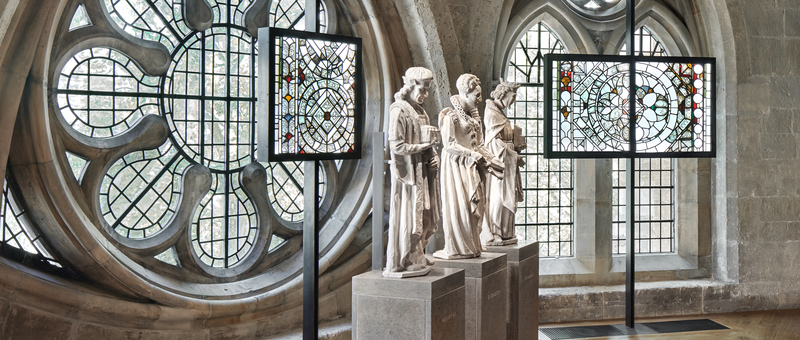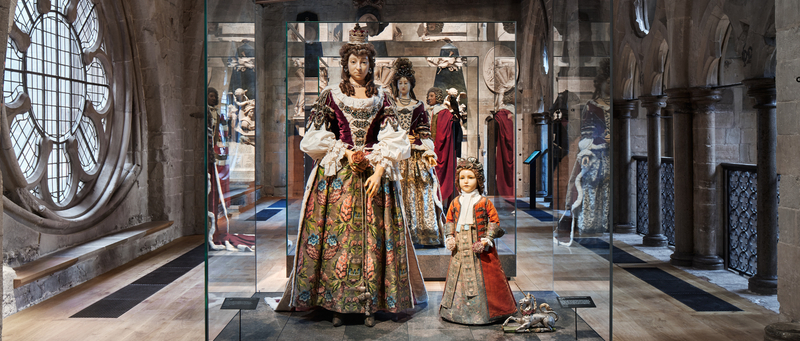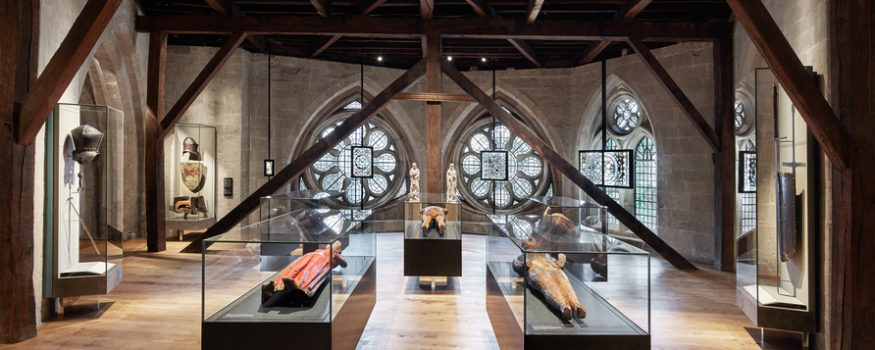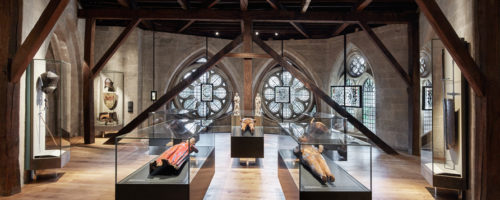The Queen’s Diamond Jubilee Galleries in Westminster Abbey’s medieval Triforium has opened to the public.
The permanent exhibition is on display in the Triforium Gallery, which has has been hidden from the public for over 700 years. Set more than 16 metres above the Abbey floor, the gallery offers spectacular views of the inside of the 13th century Abbey church as well as the Palace of Westminster.
The Queen’s Diamond Jubilee Galleries displays 300 treasures from the Abbey’s collection – many for the first time – which reflects the Abbey’s rich and varied thousand-year history.

The Galleries tell the story of Westminster Abbey in four themes:
Building Westminster Abbey charts the foundations of the first Benedictine monastery in AD 960, through its life as Edward the Confessor’s Church, and the extensive repair programme during Sir Christopher Wren’s role as Surveyor of the Fabric (1698 – 1723). Visitors can see for the first time a column capital from the cloister of St Edward the Confessor’s Church (c.1100) along with an intricate scale model of Westminster Abbey commissioned by Sir Christopher Wren in 1714.
Worship and Daily Life gives insight into the life of a working church with daily worship at its heart. Artefacts demonstrating the long history of worship at the Abbey include The Westminster Retable (1259 – 69), the oldest surviving altarpiece in England from Henry III’s Abbey, and the Litlyngton Missal, an illuminated 14th century service book made for the Abbey’s high altar.
Westminster Abbey and the Monarch looks at its special relationship with the Crown. The Abbey, a Royal Peculiar under the direct authority of the Monarch, has been the Coronation church since 1066. Mary II’s Coronation Chair (1689) is on display as well as the marriage license of The Duke and Duchess of Cambridge (2011).

The Abbey and National Memory shows how Westminster Abbey has developed into a place of commemoration and remembrance. As well as kings and queens, many notable Britons such as Geoffrey Chaucer and Sir Isaac Newton are buried and memorialised there. Since 11 November 2910 the Abbey has also become a particular focus for Remembrance following the burial of the Unknown Warrior. Three early guidebooks, including The Gigantick History of Westminster Abbey, which was designed for children in 1742, reveal the Abbey’s special place in the heart of the nation from a much earlier time.
The Very Reverend Dr. John Hall, Dean of Westminster said, “We look forward to welcoming visitors to the Galleries. The views are breathtaking; the space astonishing; the displays fascinating. The visitor will gain far greater insight into the life and history of the Abbey than ever before. The fulfilment of this vision is a shared achievement with so many people involved. We are profoundly grateful.”
Tickets are available to purchase online and on the door. The Queen’s Diamond Jubilee Galleries are accessed via stairs or life in the Weston Tower – the first major addition to the Abbey church since 1745.










